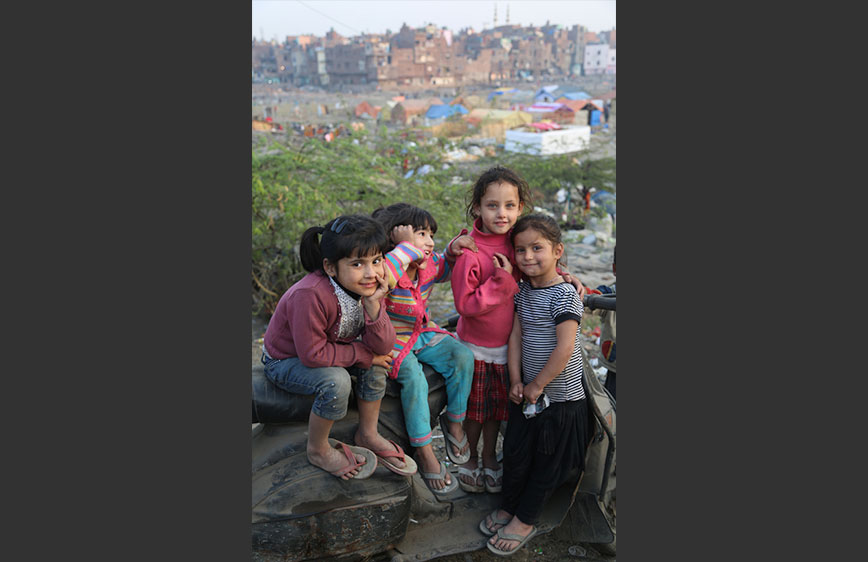Winterlude: A Season In Delhi
Winterlude
Out at work one chilly winter morning, amidst the precarious tenements of East Delhi, I come upon an empty field, a former landfill, now a habitat for living, and witness a strange spectacle.
A large number of people have suddenly descended, and there is a flurry of activity. Vacant spaces begin to fill up rapidly. Stakes are driven into the ground, bamboo poles and splints form flimsy scaffoldings, blanketed over by bright sheets of plastic, the interiors swathed in worn, though still vibrant, carpets. Almost overnight, a colourful shantytown springs up on this grim patch of land.
Amidst all this, it is the people, these new arrivals, who arouse an overwhelming sense of curiosity. It is quite obvious from their appearance and clothing that they are Kashmiris.
I was surprised and intrigued by the quick mushrooming of a Kashmiri camp in the heart of Delhi. The stereotypes quickly came tumbling out. What were they doing here? Was their presence somehow linked to the perverse politics of the State? The violence and terrorism? Was this the narrative of another sad chapter of that anguished history?
The truth, as it emerges could not be further. It was not the fear of the gun that had led to this exodus. What was being witnessed here was the unfolding of an annual ritual, a ritual that had been in place for over forty years. It is a journey that thousands of impoverished peasants and farmers of Kashmir have been making to the national capital for more than four decades. As a mantle of snow descends over the idyllic Kashmir Valley, they flee here, to this flattened remains of a landfill, to escape the bitter chill.
Every year, during the severe winter months, they leave their homes across the Valley and migrate to various cities - some to Mumbai, others to Pune, yet others to unknown destinations - and this particular throng of a little over a thousand, to Delhi. Their poverty left them with little means to survive the extreme severity of the winter, and at some point, this annual ritual was established, and was now a way of life.
And so, their search for survival brings them here, their second home, on this piece of land granted to them by the Delhi Development Authority. For the elders, this is a waiting out, till the snows melt in the mountains and they can return to their homes - this time fleeing the unbearable heat of Delhi's approaching summer. For the children, oblivious to the ugliness and degradation of their surroundings, it is a carnival, a time of unbridled exuberance and play.
This exhibition is a visual offering, an intimate inquiry into the lives of these unlikely nomads. It attempts to extract their nature, the essence of their humanity, and to capture and communicate their varied moods, through the photographic image.
.png)
.png)
.png)
.png)
.png)
An exhibition of photographs by Chitvan Gill, curated by Teteii Tochhawng; Gallerie Romain Rolland, Alliance Francaise de Delhi, Lodi Estate, New Delhi-110003.
Chitvan Gill is a writer, independent filmmaker and documentary photographer, with extensive work on social and developmental issues, urbanization and urban culture.




